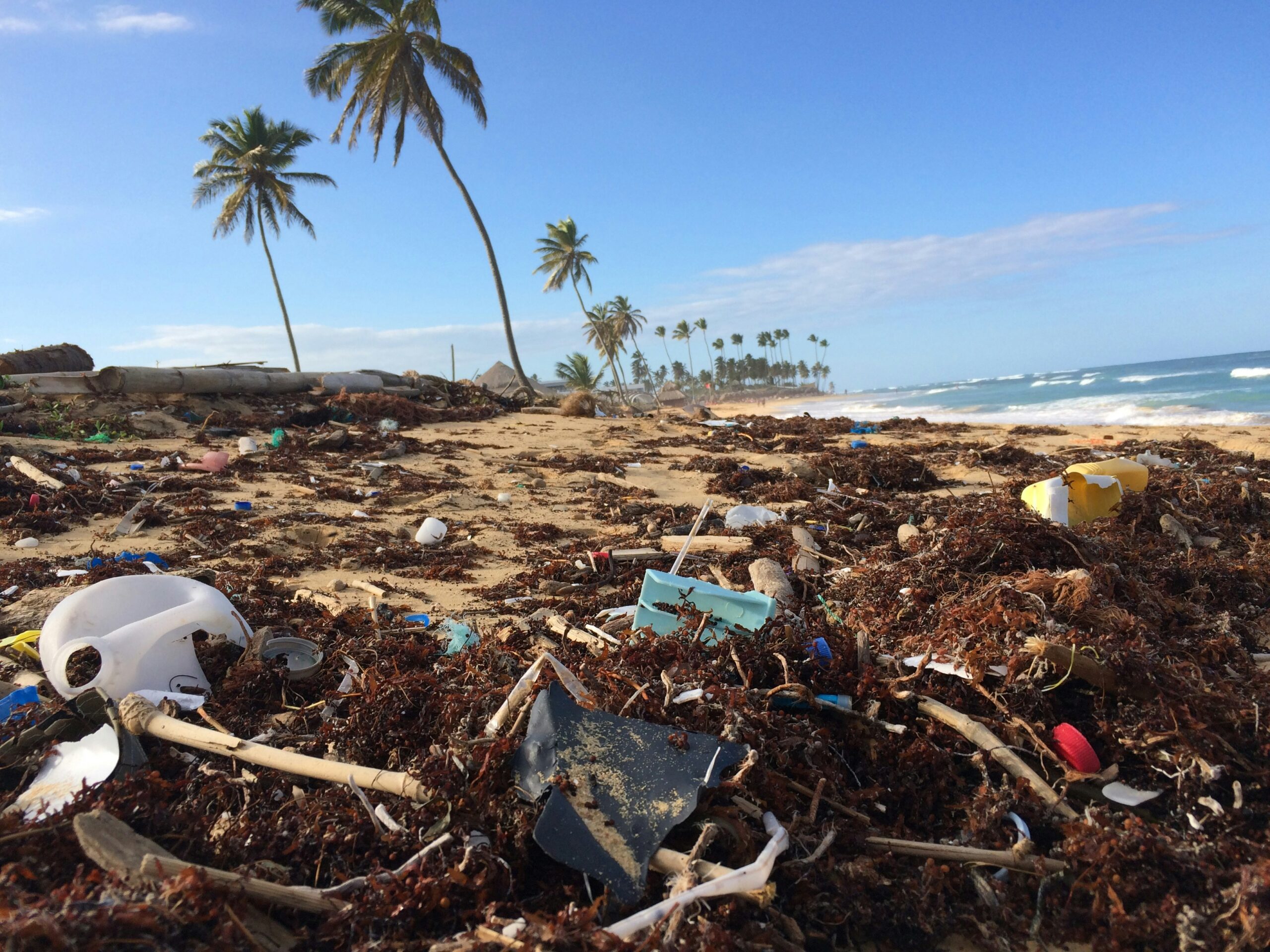
பசுமையான எதிர்காலத்தை வடிவமைத்தல்: இலங்கையில் பிளாஸ்டிக் (PLASTICS) திட்டம்

PLASTICS: இலங்கையில், நிலைபேறான, மாற்றமடையும் மற்றும் சுழற்சிபொருளாதாரத்தை உள்ளடக்கிய நீண்டகால அணுகுமுறைகளை ஊக்குவித்தல்.
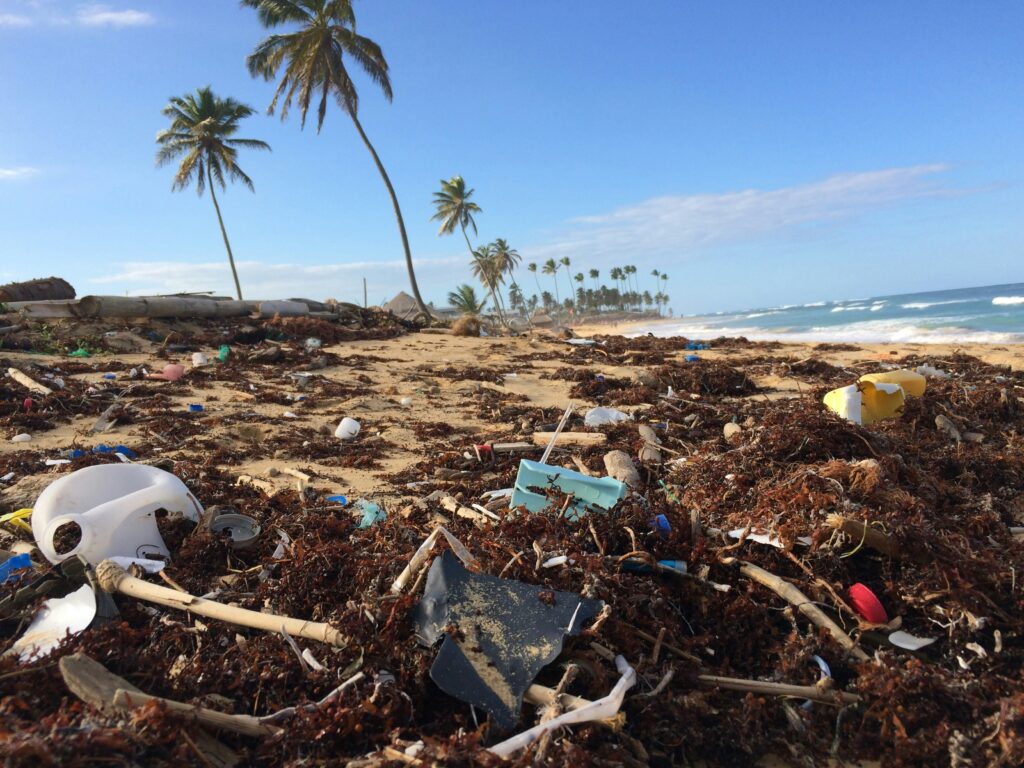
வருடாந்தம் 500,000 தொன் பிளாஸ்டிக் இலங்கையில் இறக்குமதி செய்யப்படுகின்றது. ஒட்டுமொத்தமாக 1.59 மில்லியன் பிளாஸ்டிக் கழிவுகள் தவறாக நிர்வகிக்கப்படுவதாக மதிப்பிடப்பட்டுள்ளது. இலங்கையில் பிளாஸ்டிக் பெறுமதி மற்றும் விநியோகச் சங்கிலியின் (V/SC) நேரியல் எடுத்தல்-உற்பத்தி-அகற்றல் மாதிரி சுழற்சி பொருளாதார அணுகுமுறையின் நன்மைகளைப் பெறுவதை தவறிவிட்டது.
48 மாதங்களுக்கும் மேலாக, ஐரோப்பிய ஒன்றியத்தின் நிதியுதவியுடன் செயற்படுத்தப்படும் PLASTICS திட்டம், மேற்கு மாகாணத்தில் உள்ள சிறு மற்றும் நடுத்தர தொழில்முனைவுகளின் (SMEs) வள செயற்திறன், சுழற்சிப் புத்தாக்கம் பசுமை நிதியியல் மற்றும் நிலைபேறான கழிவு முகாமைத்துவ (SWM) கட்டமைப்புகள் ஊடாக பிளாஸ்டிக் பெறுமதி மற்றும் விநியோக சங்கிலியில் பொருளாதார வளர்ச்சியை மேம்படுத்துவதை நோக்கமாகக் கொண்டுள்ளது.
பசுமை வணிக மேம்பாட்டிற்கான, ஒருங்கிணைந்த சூழலை மேம்படுத்துவதற்காக 150 சிறு மற்றும் நடுத்தர தொழில்முனைவுகள் (SMEs), 10 தொழில்முனைவோர், 50 வணிக மேம்பாட்டு சேவை வழங்குநர்கள், 10 நிதி மற்றும் அரசு நிறுவனங்கள் மற்றும் தனியார் துறை நிறுவனங்களுக்கு ஆதரவளிக்கப்படும். வணிகங்கள், குறிப்பாக பெண்கள் வழிநடத்தும் வணிகங்களின் பெறுமதி சேர்க்கையை ஊக்குவித்து, மொத்த போட்டித் திறன் மற்றும் செலவு வினைத்திறனை மேம்படுத்த ஆதரவு வழங்கப்படும்.
குறிக்கோள்
று மற்றும் நடுத்தர தொழில்முனைவுகளை பசுமையான பெறுமதி மற்றும் விநியோகச் சங்கிலிகளால் ஒருங்கிணைப்பதன் மூலம், இலங்கையில் நிலைபேறான மற்றும் புதுமையான பிளாஸ்டிக் குறைப்புடன் முகாமைத்துவத்தை எளிதாக்கி, பொருளாதார செழிப்பு மற்றும் நிலைபேறான சுற்றுச் சூழலுக்கு பங்களிப்பதே இத் திட்டத்தின் நோக்கமாகும்.
திட்டமிடப்பட்ட வெளியீடுகள்
- பிளாஸ்டிக் V/SC யில் உள்ள SME க்கள் சுழற்சிப் பொருளாதார உத்திகளைப் பின்பற்றுகின்றன.
- பிளாஸ்டிக் V/SC முழுவதும் புதுமையான, சுழற்சிப் பொருளாதார அணுகுமுறைகள் நெறிப்படுத்தப்பட்டுள்ளன.
- பசுமைப் பொருளாதார முயற்சிகளை அதிகரிக்க, குறிப்பாக SME -க்களிடையே நிதி மற்றும் பசுமை முதலீடுகளுக்கான அணுகல் அதிகரிக்கப்படுகிறது.
- பொது-தனியார் உரையாடல், ஒத்துழைப்பு மற்றும் கண்காணிப்பு மூலம் பிளாஸ்டிக் நிலைபேறான கழிவு முகாமைத்துவத்திற்கான வழியறிதல், வெளிப்படைத்தன்மை மற்றும் இணக்கம் ஆகியவை வலுப்படுத்தப்படுகின்றன.
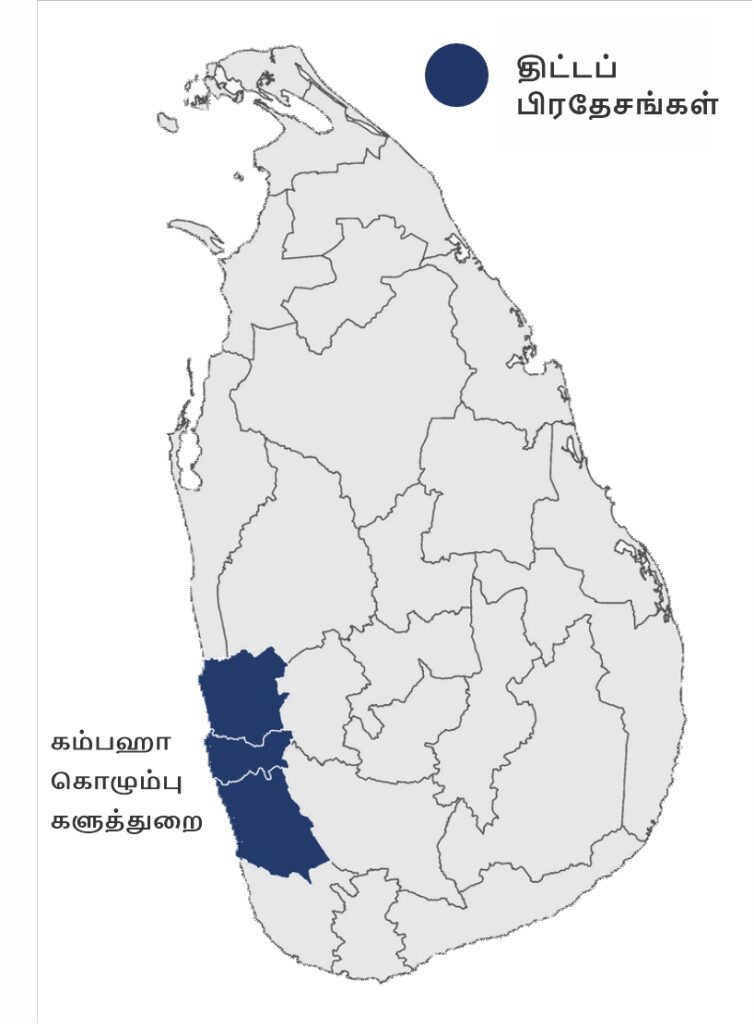


வியாபாரத் திட்டம் உருவாக்கல் பயிற்சியின் மூலம் SME களின் வளர்ச்சியை ஊக்குவித்தல்

இலங்கையின் மேற்கு மாகாணத்தில் பிளாஸ்டிக் மீள்சுழற்சி பெறுமதிச் சங்கிலியில் ஈடுபாடுகளைக் கொண்டுள்ள சிறிய மற்றும் நடுத்தர தொழில்முனைவுகளுக்கு (SMEs) வியாபாரத் திட்டம் தயாரிப்பு தொடர்பான முழுமையான 7 பயிற்சி நிகழ்ச்சித் திட்டங்களை தொழிற்துறை சேவைகள் பணிமனை (ISB) வெற்றிகரமாக நிறைவு செய்தது. இந்த நிகழ்ச்சித்திட்டங்கள் ஒவ்வொன்றும் 5-நாட்கள் கொண்டதாக அமைந்திருந்தது. ஐரோப்பிய ஒன்றியத்தின் (EU) நிதியுதவியில் முன்னெடுக்கப்படும் PLASTICS திட்டத்தின் கீழ் நடத்தப்பட்ட இந்த நிகழ்ச்சித்திட்டங்கள், நவம்பர் 2024 இன் இறுதியில் 113 தனிப்பட்ட வியாபாரத் திட்டங்கள் உருவாக்கப்படுவதற்கு வழிவகுத்தன, மேலும் எட்டு வியாபாரத் திட்டங்களின் தயார்படுத்தல் தற்போது நடைபெறுகிறது. டிசம்பர் 2024 இல் 15-20 SME களுக்கு இன்னொரு பயிற்சி அமர்வு நடத்தப்படத் திட்டமிடப்பட்டுள்ளது.
திட்டப் பயனாளிகள் வலுவான 5-வருட வியாபாரத் திட்டங்களை உருவாக்க அவர்களுக்கு உதவுவதே இந்த முன்னெடுப்பின் முக்கிய இலக்காக அமைந்துள்ளது. வளங்களை வினைத்திறனுடன் பயன்படுத்தல், தூய்மையான உற்பத்தி முறைகளைக் கைக்கொள்ளல், பேண்தகுநிலையான நுகர்வை மேம்படுத்தல், பசுமை முதலீடுகளை ஊக்குவித்தல், அத்துடன் சமூக உள்வாங்கல் மற்றும் பால்நிலை சமத்துவம் என்பவற்றை உறுதி செய்தல் போன்ற முக்கிய விடயங்களில் இந்த வியாபாரத் திட்டங்கள் கவனம் செலுத்துகின்றன. இந்த செம்மையாக்கப்பட்ட அணுகுமுறையை பின்பற்றுவதன் மூலம், பிளாஸ்டிக்குகள் எவ்வாறு சேகரிக்கப்படுகின்றன, மீள்சுழற்சி செய்யப்படுகின்றன, உற்பத்தி செய்யப்படுகின்றன மற்றும் சந்தைப்படுத்தப்படுகின்றன என்பன போன்ற அம்சங்களை மேம்படுத்துவதன் மூலம் சுழற்சிப் பொருளாதாரத்துக்கு ஆதரவளிப்பதை இந்த முன்னெடுப்பு குறியிலக்காகக் கொண்டுள்ளது.


பயிற்சியின் அடிப்படைப் பகுதிகள்
ஒரு வியாபாரத் திட்டத்தின் பின்வரும் முக்கிய கூறுகளை விருத்தி செய்ய பங்கேற்பாளர்கள் கற்றுக்கொண்டனர்:
- தொலைநோக்கு, பணிப்பாதை (Mission), மற்றும் குறிக்கோள்கள்.
- சந்தைப்படுத்தல், உற்பத்தி மற்றும் மனித வளத் திட்டங்கள்.
- விகிதப் பகுப்பாய்வு உட்பட நிதியியல் திட்டமிடல்.
இந்த முன்னெடுப்பு வியாபாரங்களுக்கு ஆதரவளிப்பது மாத்திரமன்றி பசுமை நிதிக்கான அணுகல், RECP (வள வினைத்திறன் மற்றும் தூய்மையான உற்பத்தி) மதிப்பீடுகள், QEMS (துரித சூழல் முகாமைத்துவ முறைமை) சான்றழிப்பு, ISO 14001 இணக்கம், மற்றும் விற்பனையாள-கொள்வனவாளர் மன்றங்களில் பங்கேற்பு போன்ற ஏனைய திட்ட செயற்பாடுகளுக்கான அடிப்படை ஆவணங்களையும் வழங்குகின்றது.
பயிற்சியின் தாக்கம்
SME களுக்கு தமது வியாபாரங்களில் கட்டமைப்பு மேம்பாடுகளை மேற்கொள்ளத் தேவையான நடைமுறை அறிவை வழங்கியதன் மூலம் இந்தப் பயிற்சி அவற்றுக்கு குறிப்பிடத்தக்க தாக்கத்தை ஏற்படுத்தியது. பங்கேற்பாளர்கள் இலாப நட்ட பகுப்பாய்வு பற்றிய தெளிவான புரிதலையும் பெற்றனர், இது மேலும் தகவலறிந்த முடிவுகளை எடுக்க அவர்களுக்கு உதவியது. பயிற்சியின் விளைவாக, பல SMEகள் தாம் உருவாக்கிய வியாபாரத் திட்டங்களைப் பயன்படுத்தி வங்கிக் கடன்களையும் பொருள் வடிவ மானிய உதவிகளையும் வெற்றிகரமாகப் பெற்றுள்ளன.
பங்கேற்பாளர்கள் எளிதில் அணுகக்கூடிய விதத்தில் கம்பஹா, கொழும்பு மற்றும் களுத்துறை மாவட்டங்களில் பயிற்சி அமர்வுகள் நடத்தப்பட்டன. ISB இன் நிபுணர் பயிற்சியாளர்கள் மற்றும் வணிக மேம்பாட்டு வல்லுநர்கள் தலைமையில் பயிற்சி அமர்வுகள் இடம்பெற்றன, மேலும் ஒழுங்கமைப்பு மற்றும் ஏற்பாட்டியல் விடயங்களை ACTED பணியாளர்கள் முகாமை செய்தனர்.
இந்த முன்னெடுப்பு பல SME களுக்கு ஒரு குறிப்பிடத்தக்க திருப்புமுனையைக் அமைந்தது, அவை சுழற்சிப் பொருளாதார கொள்கைகளுக்கு ஏற்புடையதாக தமது செயற்பாடுகளை பேண்தகுநிலை மிக்கதாக மற்றும் இலாபகரமானதாக முன்னேற்றப் பாதையில் நகர்வதற்கு பயிற்சி அமர்வுகள் உதவின.


ව්යාපාර සැලසුම් පුහුණුව සමගින් කුඩා හා මධ්ය පරිමාණ ව්යවසායයන්ගේ සංවර්ධනය දිරිගැන්වීම

කර්මාන්ත සේවා කාර්යාංශය (ISB) මගින් ශ්රී ලංකාවේ බස්නාහිර පළාතේ ප්ලාස්ටික් ප්රතිචක්රීකරණ අගය දාමය තුළ වන කුඩා හා මධ්ය පරිමාණ ව්යවසායයන් (SMEs) සඳහා ව්යාපාර සැලසුම් සකස් කිරීම පිළිබඳව වන පස් දින පුහුණු වැඩසටහන් හතක් සාර්ථකව අවසන් කර ඇත. යුරෝපා සංගමය වෙතින් අරමුදල් සැපයෙන “PLASTICS” ව්යාපෘතිය යටතේ පවත්වන ලද මෙම වැඩසටහන් මගින් සැපයුණු මාර්ගෝපදේශකත්වය, 2024 නොවැම්බර් මස අවසානය වන විට තනි ව්යාපාර සැලසුම් 113 ක් සම්පූර්ණ කිරීමට මග සලසා ඇති අතර, තවත් අමතර සැලසුම් අටක් මේ වනවිටත් සැකසෙමින් පවතී. කුඩා හා මධ්ය පරිමාණ ව්යාපාර 15-20 ත් අතර ප්රමාණයක් සඳහා 2024 වසරේ දෙසැම්බර් මස අග භාගය වනවිට තවත් පුහුණු සැසියක් පැවැත්වීමට සැලසුම් කර ඇත.
මෙම ආරම්භක පියවරෙහි මූලික අරමුණ වන්නේ ව්යාපෘති ප්රතිලාභීන් හට සවිමත් පස් අවුරුදු ව්යාපාරික සැලැසුම් සැකසීම සඳහා සහාය වීමයි. මෙම ව්යාපාරික සැලසුම්, සම්පත් කාර්යක්ෂම ලෙස භාවිතා කිරීම, පිවිතුරු නිශ්පාදන ක්රමවේදයන් අනුගමනය, තිරසර පරිභෝජනයන් ප්රවර්ධනය, හරිත ආයෝජනයන් දිරිගැන්වීම, සමාජීය අන්තර්කරණයන් සහ ස්ත්රී පුරුෂ සමානාත්මතාවයන් තහවුරුකිරීම වැනි ප්රමුඛ ක්ෂේත්ර මත තම අවධානය කේන්ද්රගත කරනු ඇත. ඉහත මූලාරම්භය, මෙම පුළුල් ප්රවේශය අනුගමනය කිරීමෙන්, භාවිතයෙන් බැහැර කෙරෙන ප්ලාස්ටික් එක්රැස්කිරීම, ඒවා ප්රතිචක්රීකරණය, යළි ප්ලාස්ටික් නිශ්පාදනය සහ ඒවා වෙළඳපොළට නිකුත් කිරීම යන ක්රියාවලීන් සිදුකෙරෙන ආකාරයන් වැඩිදියුණු කිරීම ඔස්සේ චක්රීය ආර්ථිකයකට දායක වීම ඉලක්ක කරයි.


පුහුණුවෙහි මූලික අංග
පුහුණුව සඳහා සහභාගී වූවන් හට ව්යාපාර සැලැස්මක වන පහත සඳහන් තීරණාත්මක අංග වැඩිදියුණු කිරීම සිදු කළ හැකි ආකාරය පිළිබඳ අවබෝධයක් සපයනු ලැබිණි.
- දැක්ම , මෙහෙවර සහ අරමුණු
- අලෙවිකරණය, නිශ්පාදනය සහ මානව සම්පත සැලසුම් කරණය
- ව්යාපාරයක මූල්ය ප්රකාශයේ ඇතුළත් අංග විශ්ලේෂණය (අනුපාත විශ්ලේෂණය) ඇතුළත් මූල්ය සැලසුම්කරණය.
මෙම මූලාරම්භය මගින් ව්යාපාර සංවර්ධනයට අදාළ සහාය ලබාදීම පමණක් නොව හරිත මූල්ය ක්රියාකාරකම් ඇගයුම, RECP ( සම්පත් කාර්යක්ෂමව භාවිතය සහ පිවිතුරු නිශ්පාදන) ඇගයුම්, QEMS පාරිසරික කළමණාකරණ පද්ධති සහතිකකරණය, ISO 14001 අනුකූලතා සහතිකකරණය සහ ගැණුම්කරුවන් සහ විකුණුම්කරුවන් අතර හමු සඳහා සහභාගීත්වය වැනි වෙනත් ව්යාපෘති ක්රියාකාරකම් සඳහා අවශ්ය මූලික පදනම් ලේඛණ සැපයීම පවා සිදු කරනු ලැබේ.
ව්යාපෘතියේ බලපෑම
මෙම පුහුණුව මගින් තම ව්යාපාරයන්හි ව්යූහාත්මක වැඩිදියුණුකිරීම් සිදුකිරීම සඳහා අවශ්ය ප්රායෝගික අවබෝධය ලබාදීම ඔස්සේ කුඩා පරිමාණ ව්යවසායයන් මත සැලකියයුතු මට්ටමේ බලපෑමක් ඇති කරන ලදී. එමෙන්ම සහභාගී වූවන් හට ලාභ, අලාභ විශ්ලේෂණය පිළිබඳ පැහැදිලි අවබෝධයක් සපයන ලද අතර එමගින් ඔවුනට වඩාත් දැනුවත් තීරණ ගැනීමේ අවකාශයන් සලසා ඇත. මෙම පුහුණුවෙහි ප්රතිඵලයක් ලෙස කුඩා හා මධ්ය පරිමාණ ව්යවසායයන් බොහොමයකට තමන් විසින් සකසන ලද ව්යාපාර සැලසුම් උපයෝගී කරගනිමින් සාර්ථක ලෙස බැංකු ණය පහසුකම් මෙන්ම මුදල්මය නොවන ප්රදානයන් ද ලබාගැනීමට හැකියාව ලැබී ඇත.
සහභාගීවන්නන් හට පහසුවෙන් සම්බන්ධ විය හැකි අයුරින් මෙම පුහුණු වැඩසටහන්, ගම්පහ, කොළඹ, කළුතර යන දිස්ත්රික්කයන්හි පැවැත්වුණු අතර ISB ආයතනයේ විශේෂඥ පුහුණුකරුවන් සහ ව්යාපාර සංවර්ධනය පිළිබඳව විශේෂඥයින් පුහුණු සැසි මෙහෙය වූ අතර ඇක්ටඩ් ආයතනයේ කාර්ය මණ්ඩලය විසින් සංවිධාන කටයුතු සහ කාර්ය සම්පාදන ක්රියාකාරකම් මෙහෙයවනු ලැබිණි.
මෙම මූලාරම්භය බොහොමයක් කුඩා හා මධ්ය පරිමාණ ව්යවසායයන්ට තීරණාත්මක සංධිස්ථානයක් ව ඇත්තේ චක්රීය ආර්ථිකයන් සමගින් එක්ව ගමනක යෙදෙන තිරසර මෙන්ම ලාභ උපයන ආයතන බවට පත්වීමේ මාර්ගය හෙලිකරදීම මගිනි.


හරිත අනාගතයක් සඳහා කුඩා හා මධ්ය පරිමාණ ව්යවසායකයින් සවිබල ගැන්වීම: “ප්ලාස්ටික්ස්” ව්යාපෘතිය යටතේ ව්යාපාර සැලසුම් පුහුණුව


ශ්රී ලංකාව චක්රීය ආර්ථිකයක් වෙත හුවමාරු වීමේ ක්රියාවලිය තුළ කුඩා හා මධ්ය පරිමාණ ව්යවසායන් (SMEs) තීරණාත්මක කාර්යභාරයක් ඉටු කරයි. මෙය හඳුනා ගනිමින්, යුරෝපා සංගමයේ අරමුදල් මත ක්රියාත්මක “ප්ලාස්ටික්ස් ” ව්යාපෘතිය මගින් ප්ලාස්ටික් ප්රතිචක්රීකරණ අගය දාමය තුල වන කුඩා හා මධ්ය පරිමාණ ව්යවසායන් 152ක්, තිරසරභාවය සහ ලාභදායිත්වය ක්රියාවෙහි යෙදවීම සඳහා අත්යවශ්ය ව්යාපාරික කුසලතාවන්ගෙන් සන්නද්ධ කිරීම සිදු කර ඇත.
මෙම ව්යාපෘතිය මගින් කර්මාන්ත සේවා කාර්යාංශයේ (ISB) සහයෝගීතාවය ඇතිව, ශ්රී ලංකාවේ බස්නාහිර පළාත තුළ පස් දින ව්යාපාර සැලසුම් සැකසීමේ කඩිනම් පුහුණු වැඩසටහන් හතක් සාර්ථකව පවත්වා ඇත. ගම්පහ, කොළඹ සහ කළුතර දිස්ත්රික්කවල පවත්වන ලද මෙම සැසිවාරයන් මගින් මේ වනවිටත් සවිස්තරාත්මක ව්යාපාර සැලසුම් 113ක් නිර්මාණය කර ඇති අතර තවත් සැලසුම් අටක් සැකසෙමින් පවතී. තවත් කුඩා හා මධ්ය පරිමාණ ව්යවසායන් 15-20 ත් අතර ප්රමාණයක් ඉලක්ක කර ගනිමින් අමතර පුහුණු සැසියක් 2024 දෙසැම්බර් මාසයේදී පැවැත්වීමට දින නියම කරගෙන ඇත.
සාර්ථකත්වය උදෙසා පදනමක් සකසමින්
ඉහත පුහුණු වැඩසටහන් ව්යාපාර සැලසුම්හි මූලික අවධිය ඉක්මවා යන අතර දීර්ඝකාලීන උපායමාර්ගයන්ට තිරසරබව සහ නවෝත්පාදනය යන මූලධර්ම ඇතුළත් කරවීම අරමුණු කරයි. එම ව්යපාර සැලසුම්හි පහත කරුණු අන්තර්ගත වේ.
- ආයතනයේ වැඩිදියුණුවට මග පෙන්වීම සඳහා සැකසුණු දැක්ම, මෙහෙවර සහ අරමුණු
- මෙහෙයුම් වඩාත් කාර්යක්ෂම සහ ඵලදායී කිරීම සඳහා අලෙවිකරණය, නිෂ්පාදනය සහ මානව සම්පත් සැලසුම්.
- දැනුවත් තීරණ ගැනීම සඳහා මූල්ය ප්රක්ෂේපන (ආයතනයේ අනාගත මූල්ය ක්රියාකාරීත්වය පිළිබඳව වන ලේඛණ) සහ අනුපාත විශ්ලේෂණයන් (ආයතනයේ මූල්ය ප්රකාශයෙහි වන විවිධ මූල්ය අයිතම පිලිබඳව වන දත්ත ඇගයීම ඔස්සේ අදාළ ආයතනයේ මූල්ය කාර්යසාධනය ඇගයීම) සිදු කිරීම.
සම්පත් කාර්යක්ෂම ලෙස භාවිතය, පිවිතුරු නිශ්පාදන, හරිත ආයෝජනයන් සහ ස්ත්රී පුරුෂ සමාජභාවයන් ඇතුළත් කරගැනීම වැනි තීරණාත්මක සාධක අන්තර්ගත කරගැනීම සහ ඒ ඔස්සේ තම ව්යාපාරයන් චක්රීය ආර්ථිකය සමගින් පෙළගැස්වීම පිළිබඳව සහභාගී වූවන් පුහුණු කරවන ලදී.
සැලසුම් අභිවෘද්ධිය/ප්රගතිය කරා ගෙනයාම
මෙම පුහුණුවල බලපෑම කුඩා සහ මධ්ය පරිමාණ ව්යවසායයන් බොහොමයක් සඳහා පරිවර්තනීය ලෙස බලපා තිබේ.
- ව්යුහාත්මක වැඩිදියුණු කිරීම්: සහභාගීවන්නන් තම මෙහෙයුම් යළි සකස් කිරීම සහ ඵලදායිතාව ඉහළ නැංවීම පිලිබඳව ප්රායෝගිකව දැනුවත් වන ලදී.
- වඩා යහපත් මූල්යමය අවබෝධයක් : පුහුණුවට සහභාගී වූ කුඩා සහ මධ්ය පරිමාණ ව්යවසායයන් හට දැන් ලාභ අලාභ විශ්ලේෂණය පිළිබඳව අවබෝධයක් ඇති අතර එබැවින් ඔවුන් වඩාත් ප්රඥාවන්ත ආයෝජනයන් සිදුකිරීමට සමත් වෙති.
- ප්රතිපාදන වෙත පිවිසීමේ හැකියාව : ව්යාපාරයන් කිහිපයකටම තමන් විසින් සකසන ලද වෘත්තීයමය ව්යාපාර සැලසුම් උපයෝගී කරගනිමින් බැංකු ණය පහසුකම් මෙන්ම ප්රදානයන් ද ලබාගැනීමට හැකියාව ලැබී ඇත.
ඉහත ව්යාපාර සැලසුම් මගින් තවදුරටත් PLASTICS ව්යාපෘතිය වෙතින් ඉදිරිපත් කෙරෙන වෙනත් අවස්ථාවන් වෙත ප්රව්ශයන්ද සලසා දෙයි, ඒ අතරට පහත කරුණුද ඇතුළත් වේ.
- හරිත මූල්ය සහ RECP ( සම්පත් කාර්යක්ෂමව භාවිතය සහ පිවිතුරු නිශ්පාදන) ඇගයුම්
- QEMS පාරිසරික කළමණාකරණ පද්ධති සහතිකකරණය සහ ISO 14001 අනුකූලතා සහතිකකරණය.
- ගැණුම්කරුවන් සහ විකුණුම්කරුවන් අතර හමු සඳහා සහභාගී වීමේ හැකියාව සහ ඒ ඔස්සේ වටිනා වෙළඳපොළ සබඳතා ගොඩනගාගැනීමේ හැකියාව.
සාමූහික ප්රයත්නයක්
මෙම පුහුණුවල සාර්ථකත්වය, ISB, ACTED යන ආයකනවල මෙන්ම ප්ලාස්ටික්ස් ව්යාපෘතියේ සාමූහික ප්රවේශය පිළිබඳව සාක්ෂියකි. විශේෂඥ පුහුණුකරුවන් සහ ව්යාපාර සංවර්ධනය පිළිබඳව විශේෂඥයින් පුහුණු සැසි මෙහෙය වූ අතර ACTED ආයතනයේ කාර්ය මණ්ඩලය විසින් සංවිධාන කටයුතු සහ කාර්ය සම්පාදන ක්රියාකාරකම් සුමටව මෙහෙයවනු ලැබිණි
තිරසර බව කරා දිවෙන මාවතක්
තිරසර භාවිතයන් අනුගමනය, තම මෙහෙයුම් වැඩිදියුණු කරගැනීම මෙන්ම තරඟකාරී වෙළඳපොළක් තුළ සවිමත්ව නැගී සිටීමට අවශ්ය සවිය ව්යවසායයන්ට ලබාදීම ඔස්සේ මෙම මූලාරම්භය කුඩා හා මධ්ය පරිමාණ ව්යවසායයන් බොහොමයකට තීරණාත්මක සංධිස්ථානයක් වී ඇත. චක්රීය ආර්ථික මූලධර්මයන් තම ව්යාපාර සැලසුම් තුළට අන්තර්ග්රහණය කරගැනීම ඔස්සේ මෙම ව්යවසායයන් තම ව්යාපාරය මගින් ජනිත වන පාරිසරික බලපෑම අවම කරගැනීමට මෙන්ම තම නම්යශීලත්වය සහ ලාභ ඉපයීමේ හැකියාවන් සවිමත් කරගැනීමට සමත්ව ඇත.

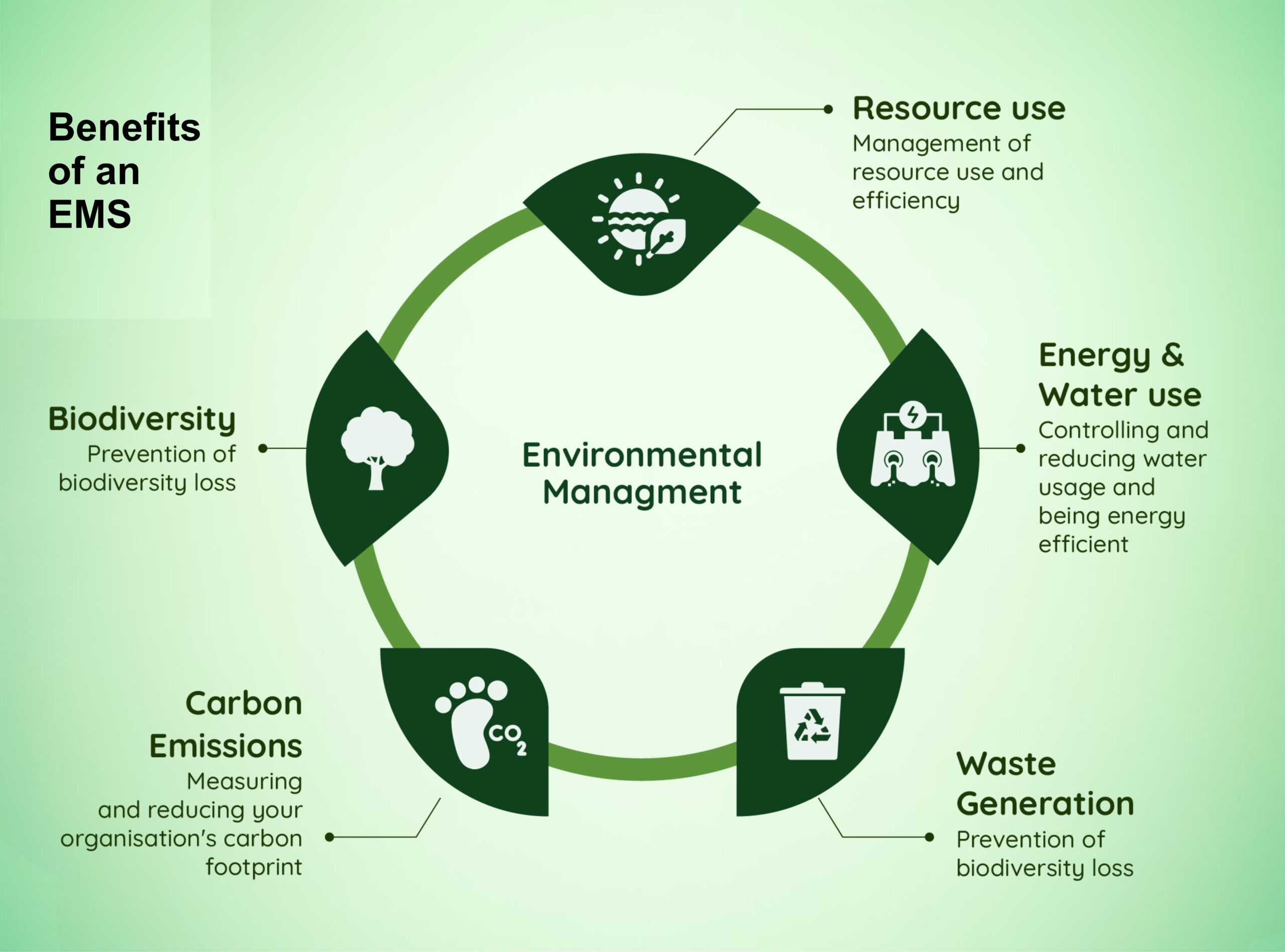
Quick Environment Management System (QEMS) for SMEs in Sri Lanka

What if saving the planet could save you money? In today’s competitive market, going green is not just good for the planet – it is good for your company’s bottom line. While large corporations invest millions in environmental certifications, small and medium enterprises often struggle with the complexity and cost of implementing management systems like ISO 14001. But what if there was a simpler, cost-effective way to reduce your environmental impact while cutting operational costs and attracting more customers? That is where Environmental Management Systems come in, offering a practical path to sustainability that works for businesses of any size.

The Benefits of an Environmental Management System (EMS)
Identify Areas of Environmental Risks: EMS certifications such as ISO 14001 ensures businesses integrate a structured approach to identifying areas of risks, waste, and areas of improvement, enabling them to reduce resource consumption, lower emissions, and minimise waste. These measures, in addition to reducing negative impacts on the planet, also enhance their corporate image as environmentally conscious entities.
Cost Savings and Efficiency: By encouraging practices that reduce waste and optimise the use of resources such as fuel consumption and water, an EMS leads to streamlining of operations resulting in lower utility costs, fewer materials used, and a reduction in waste disposal expenses. Additionally, an EMS fosters compliance with environmental regulations, which can help businesses avoid costly fines or penalties for non-compliance.
Improved Market Competitiveness: With consumers and investors increasingly prioritising sustainability, an established EMS demonstrates a company’s commitment to actionable progress to environmental responsibility, which can attract eco-conscious customers and investors. This can open doors to new business opportunities and strengthen the businesses position in the market.
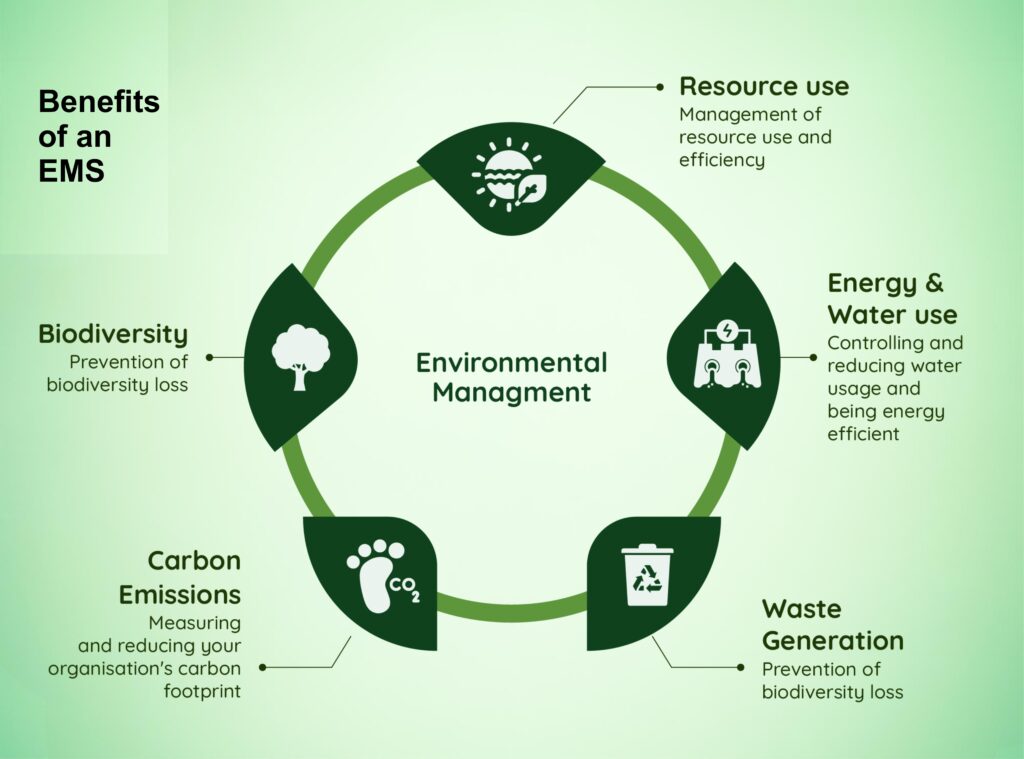
The Challenges of ISO 14001 Adoption
High Initial Costs and Resource Demands: The initial associated costs can be a significant barrier, particularly for small and medium-sized enterprises (SMEs). Developing and integrating an EMS can require significant time, expertise, and effort. Third party certification costs can also be significant, which many businesses struggle to justify, especially when the return on investment in an EMS is not tangible.
Ongoing Monitoring and Maintenance: The requirement for continuous monitoring, evaluation, and improvement may be demanding in terms of both time and resources. For many SMEs, this additional workload if often seen as a hindrance rather than a value adding set of activities.
Why the Low Uptake of ISO 14001 Certification?
Despite the clear potential benefits of ISO 14001, the challenges associated with its implementation contribute to its relatively low uptake, especially among SMEs. Many businesses hesitate to adopt the standard due to the initial costs, complexity, and time required to establish and maintain an effective EMS. While ISO 14001 offers significant environmental, financial, and competitive advantages, the challenges associated with its adoption—particularly for smaller businesses—remain substantial.
The Solution
Keeping this in mind, QEMS has been developed at STENUM Asia to support SMEs to align with some of the key aspects of the ISO 14001standard, improving operational performance while driving real change.
QEMS is a simplified, quicker yet effective environmental management system, tailored for SMEs. Considered as a simpler and more manageable first step towards ISO 14001 as certain aspects or requirements of ISO 14001 are in focus. QEMS focuses on key aspects of an EMS which deliver value to the SME, while also helping reduce the environmental impact of the SME.
The implementation of QEMS for SMEs is a structured 8-step process that can be completed in 4 days. The journey begins by understanding the business context of the SME and defining the scope of the environmental management system followed by conducting an eco-mapping assessment to identify hotspots; and develop a tailored Environmental Action Plan. SMEs will formulate an environmental policy with our guidance and conduct the first management review to evaluate progress and adjust accordingly. An internal audit shall be carried out to ensure compliance, followed by a second management review to assess the readiness for certification.
Throughout the process, SMEs are guided with consultations and materials, ultimately setting the foundation for long-term sustainability and potential ISO 14001 certification.
QEMS is currently being implemented in four SMEs in Sri Lanka and have already been established in few others in India, where they have already delivered significant benefits.
The path to environmental responsibility does not have to be complex or costly. QEMS offers SMEs a practical first step towards sustainability, delivering tangible benefits from reduced utility bills to enhanced market reputation. With success stories showing ROI in less than a year and operational cost reductions of up to 30%, the question isn’t whether to implement an environmental management system – it’s why wait? Take the first step today towards a more sustainable and profitable future for your business.


Strategic Briefing on the Delivery of Green Financial Services to Businesses

The Strategic Briefing on the Delivery of Green Financial Services to Businesses brought together experts and stakeholders to discuss sustainable finance in Sri Lanka. The event underscored the urgency of aligning financial systems with environmental goals to address the global climate crisis and build a resilient economy. Key discussions highlighted the role of financial institutions in bridging funding gaps and promoting green economic growth.
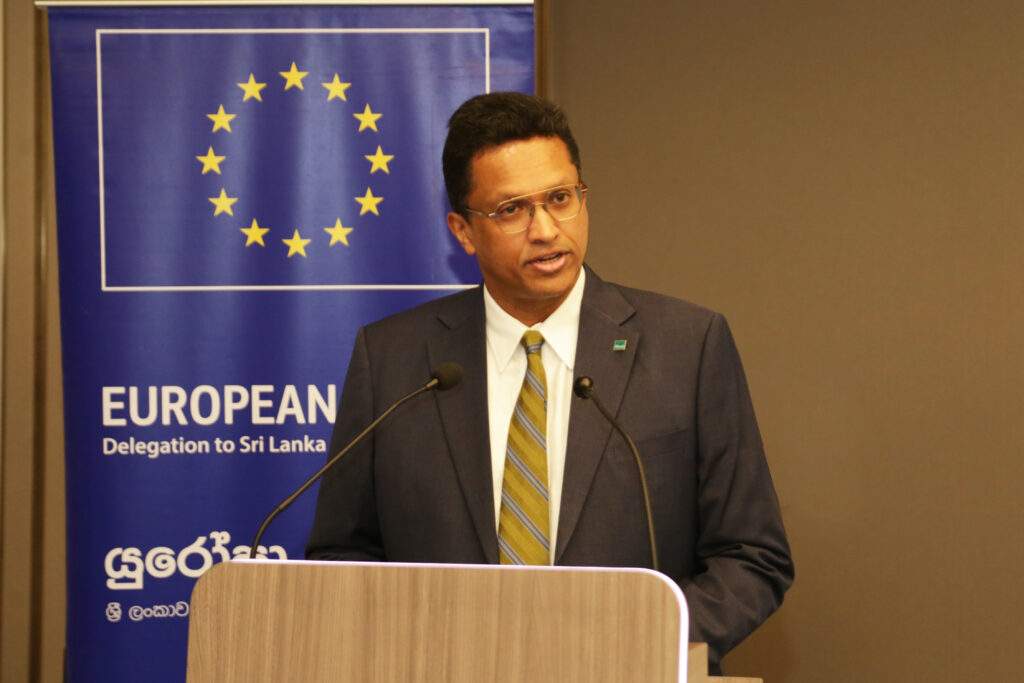
Mr. Dilhan C. Fernando, Chairman of Biodiversity Sri Lanka (BSL), emphasised the severe climate risks outlined during COP29, including the slim chances of limiting global warming to 1.5°C. He called for immediate financial investments in developing nations like Sri Lanka to mitigate climate impacts. BSL’s collaboration with the EU-funded Switch Asia project was commended as a benchmark for advancing circular economy solutions. The involvement of the Central Bank Governor was highlighted as critical for fostering a green financial ecosystem to support the nation’s green transition.
Dr. Johann H. Hesse, Head of Cooperation of the EU Delegation to Sri Lanka and the Maldives, shared insights into the EU’s Green Deal, a policy package aimed at climate neutrality by 2050. He celebrated milestones such as the launch of Sri Lanka’s first green bond and stressed addressing barriers like information gaps and limited private investment mechanisms. He also highlighted ongoing EU support for circular economy initiatives, including plastics management under the Switch Asia Plastics Project, and reiterated the importance of partnerships to strengthen Sri Lanka’s financial sector.
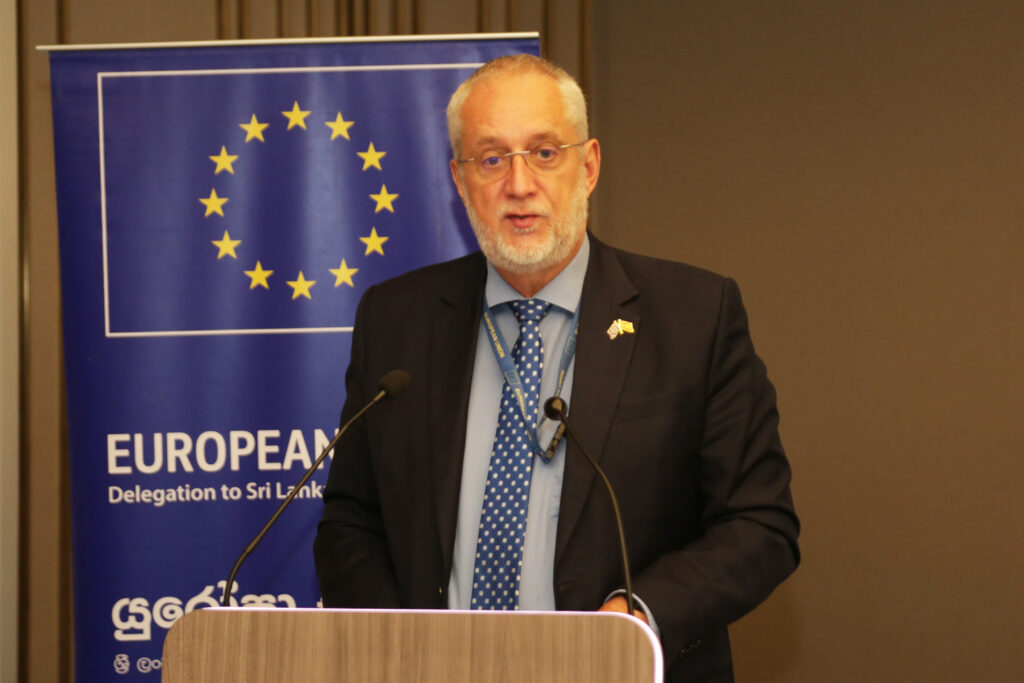
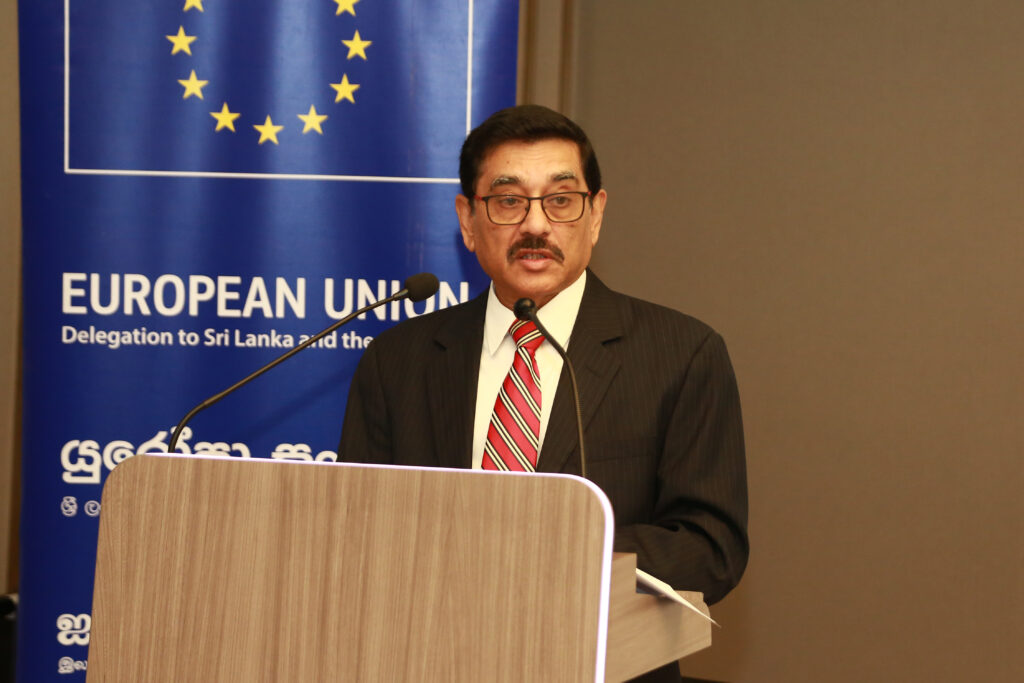
Delivering the keynote address, Dr. P. Nandalal Weerasinghe, Governor of the Central Bank of Sri Lanka, focused on the global significance of addressing climate risks. He pointed out the inadequacy of taxpayer-funded initiatives and emphasised the need for innovative financial instruments to attract private sector investments. He outlined the Central Bank’s progress in sustainable finance, such as the 2019 roadmap and the 2022 green finance taxonomy. Despite challenges posed by the pandemic, the Central Bank enhanced sector capacity through training and international collaborations. A new roadmap is being developed, integrating social and environmental considerations to broaden sustainable finance frameworks.
Dr. Weerasinghe also stressed the importance of adaptation finance, alongside mitigation efforts, to address growing climate risks. He called for innovative financial products and increased collaboration to close gaps in Sri Lanka’s sustainable finance progress. The Governor reaffirmed the Central Bank’s commitment to fostering sustainability and enabling a cultural shift toward green development.
The event included a presentation by Mr. Errol Abeyratne, BSL Green Finance Specialist, on the EU Switch Asia Plastics project, which promotes a circular economy through green financing and clean tech solutions. Key achievements included feasibility studies, outreach to financial institutions, and capacity-building programmes for SMEs. Future efforts will focus on increasing institutional engagement and leveraging philanthropic investments for climate risk financing.
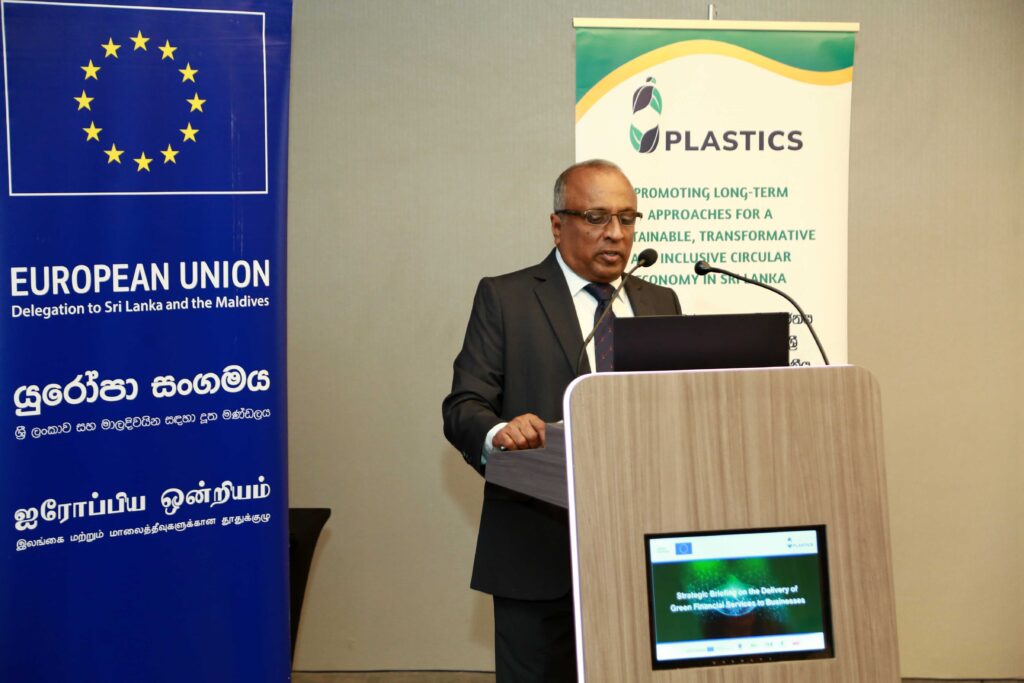
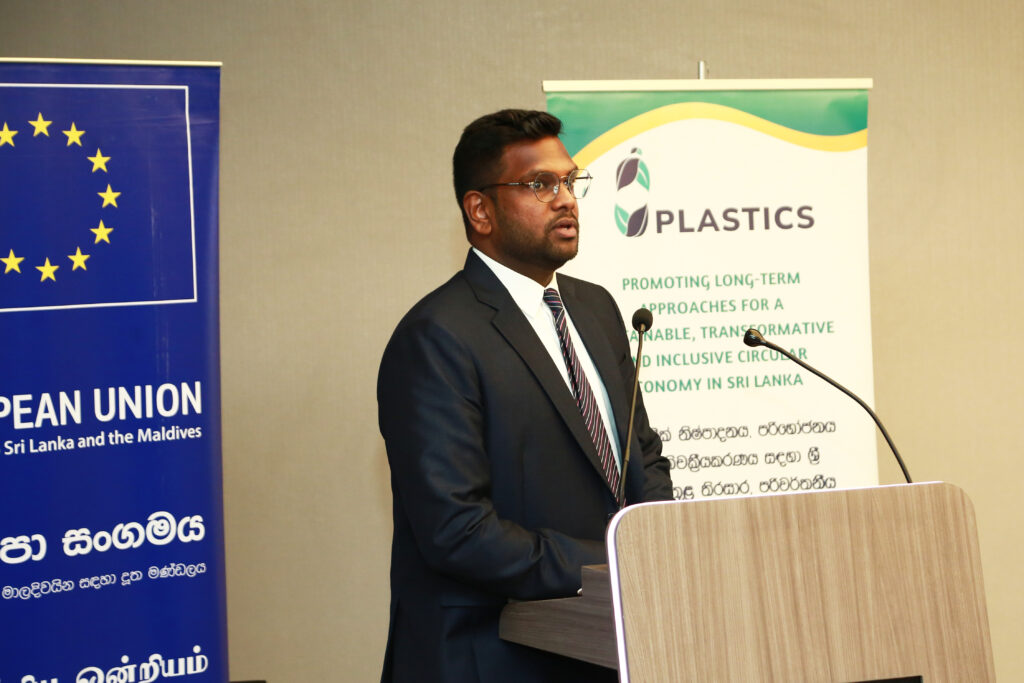
Mr. Anushka Wijesinha, Co-Founder of the Center for a Smart Future, presented findings from the Green Finance Maturity Assessment, which identified gaps in operationalising green finance, such as limited internal policies and inadequate risk assessment mechanisms. The study emphasised integrating environmental risk assessments into financial processes to unlock green growth opportunities.
During the open discussion, stakeholders addressed barriers like high costs of green finance, the potential of green bonds, and the role of fiscal and regulatory incentives. Dr. Weerasinghe highlighted the need for institutional coordination to align national policies with international climate goals and foster innovative financing mechanisms.
The briefing concluded with a call for multi-stakeholder collaboration to overcome barriers, advance green finance, and accelerate Sri Lanka’s transition to a sustainable economy. By fostering dialogue, stakeholders can drive ecosystem restoration, green economic growth, and resilience in the face of climate challenges.

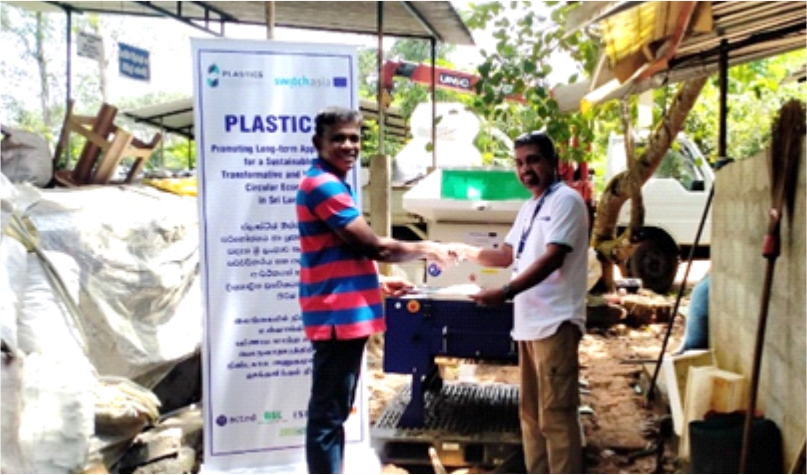
Boosting SMEs through Strategic Asset Support

Boosting SMEs through Strategic Asset Support
Through a dedicated effort to transform the plastics value chain, the PLASTICS project has set a precedent by equipping Small and Medium Enterprises (SMEs) with critical assets to foster innovation and operational excellence. These assets are not merely tools; they are catalysts for sustainable growth and industry leadership.
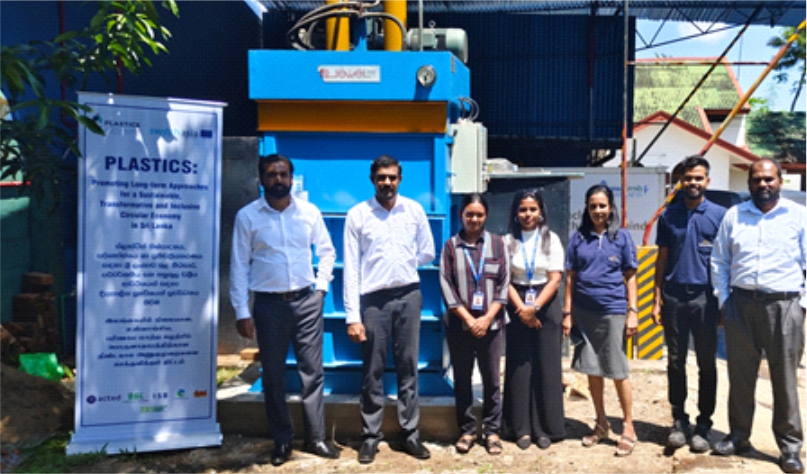

Collaborative Investment
SMEs participating in the project demonstrate their commitment by contributing 50% of the financial costs towards these assets. This shared investment not only instills a sense of ownership but also solidifies their long-term engagement in building a more sustainable and profitable future.
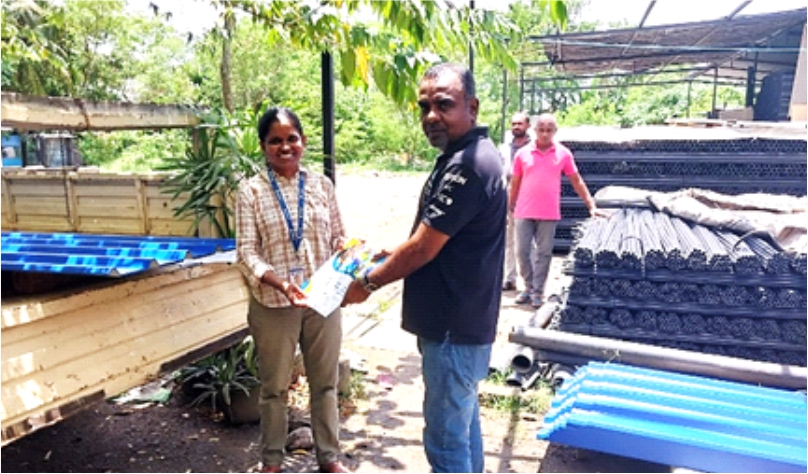
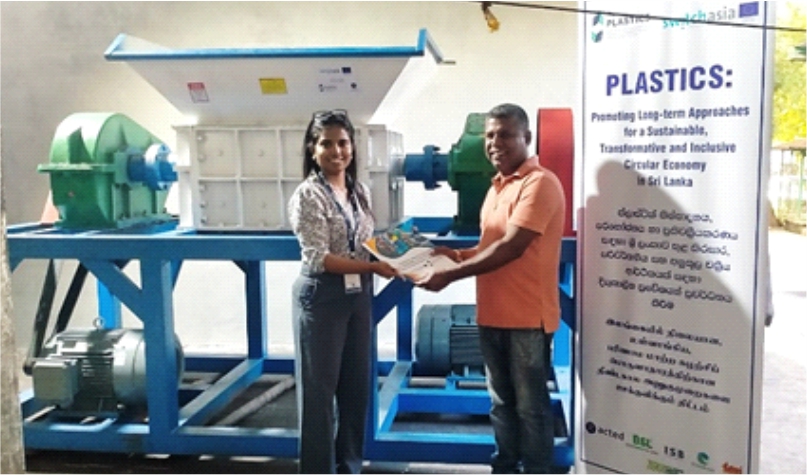
Tailored Solutions
The assets provided are not one-size-fits-all solutions but are carefully tailored to meet the unique needs of each business. This customiszation is based on:
- Expert Assessments by Enterprise Capacity Assessment Tool (ECAT):Evaluate the capacity, strengths, and weaknesses of enterprises.
- Resource Efficient and Cleaner Production (RECP) Plans: Ensuring that resources are utilis
zed efficiently, minimiszing waste and environmental footprint. - Individual Business Strategies: Aligning assets with the SMEs’ growth goals and market opportunities.
By aligning these insights with targeted asset allocation, the project ensures that businesses are equipped to address challenges and seize new opportunities effectively.
Innovation and Sustainability
The impact of these assets extends far beyond immediate operational improvements. They enable SMEs to:
- Expand Capabilities: Whether through enhanced production technologies, innovative recycling mechanisms, or resource-efficient processing, the assets empower businesses to take on larger markets.
- Launch New Initiatives: Many SMEs have ventured into previously unexplored areas, diversifying their offerings and driving value creation.
- Promote Sustainability: By adopting best practices in the plastics value chain, these businesses contribute to reducing waste and embracing circular economy principles.
Transformation in Action
One such SME shared how the project’s support enabled them to transition from traditional manufacturing to incorporating recycled plastics in their product lineallowing the company to fulfill larger orders and explore bulk manufacturing opportunities. The new machinery and technical insights have not only reduced production costs but also elevated their market positioning as an eco-conscious brand.
Ripple Effect of Change
Through the PLASTICS project, SMEs are not just improving their individual operations but are also setting benchmarks for sustainable business practices in the industry. This initiative showcases how strategic investments, combined with collaborative efforts, can drive meaningful change for businesses, communities, and the environment.
By empowering SMEs to thrive, the PLASTICS project exemplifies a model for fostering innovation and sustainability, paving the way for a more resilient and responsible future.

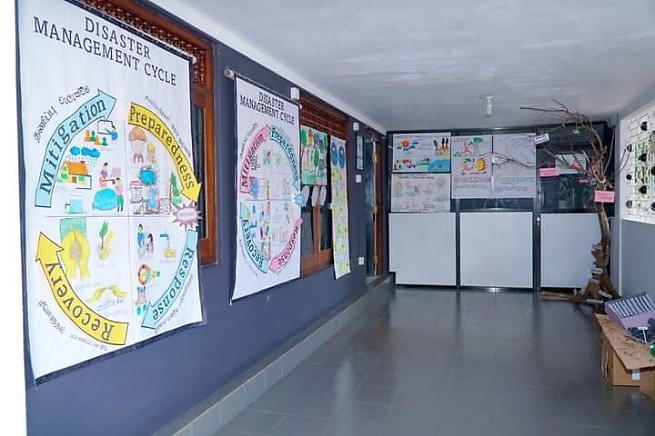
Empowering Change: The 3Zero House in Sri Lanka

The 3Zero House is Acted Sri Lanka’s hub for learning, innovation, and empowerment, championing the belief that youth should lead the way as agents of economic and social transformation. By uniting NGOs, government bodies, CBOs, SMEs, and most importantly, young changemakers, the 3Zero House is creating a collaborative movement rooted in its three core pillars: Zero Poverty, Zero Exclusion, and Zero Carbon.
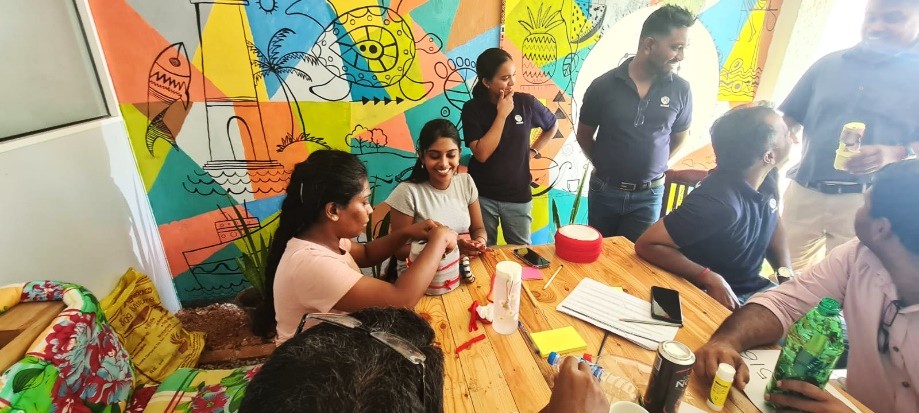
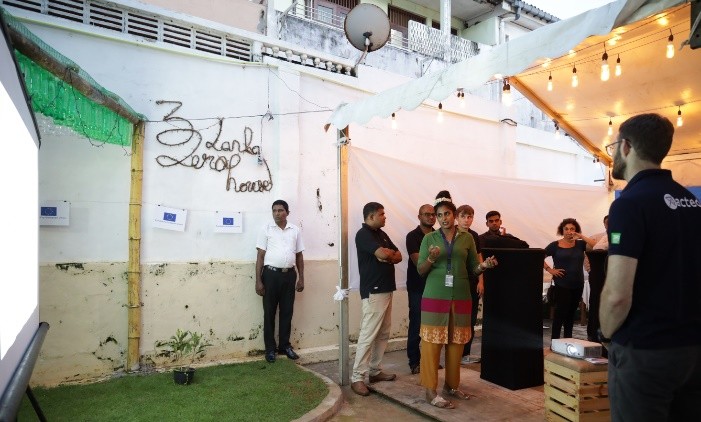
First 3Zero House launching in Colombo
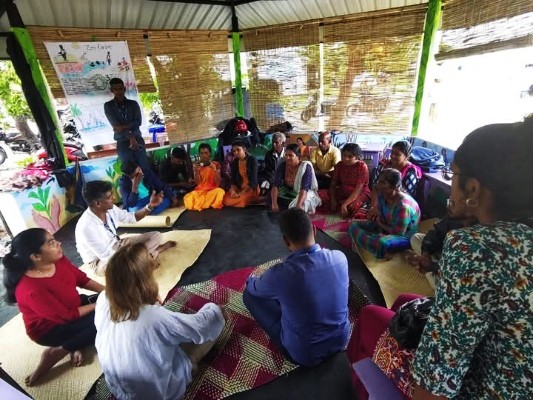
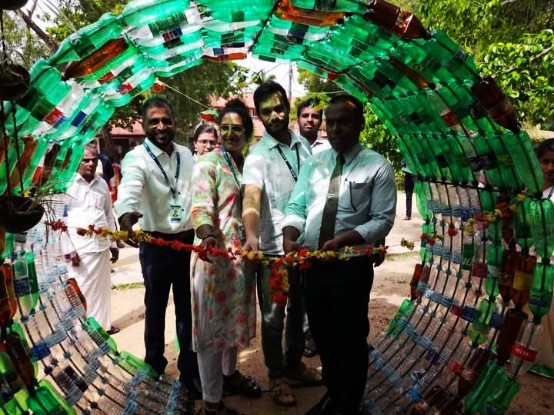

Launching of first 3Zero House Campus at the DS Office Vellawavelly. Batticaloa

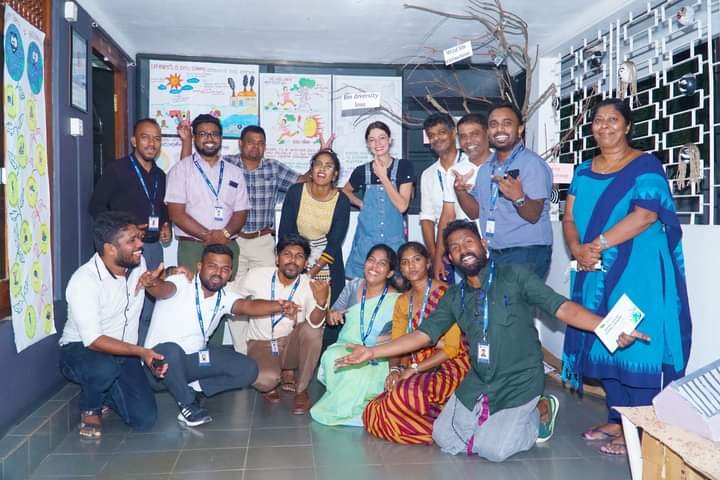
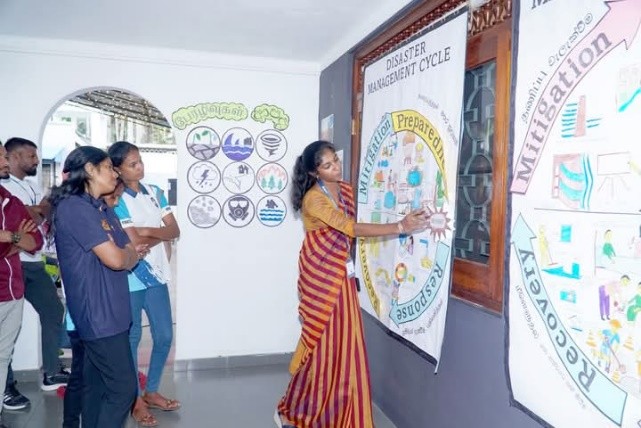
Second 3Zero House launching in Vavuniya
Incubating Solutions for a Circular Economy
As part of the PLASTICS project, the 3Zero House launched a call for innovative enterprises in May 2024 to tackle the gaps in the plastics value chain. The mission? To find scalable, locally-led solutions in areas like alternative packaging, plastic reuse, and strengthening the 3R (Reduce, Reuse, Recycle) approach.
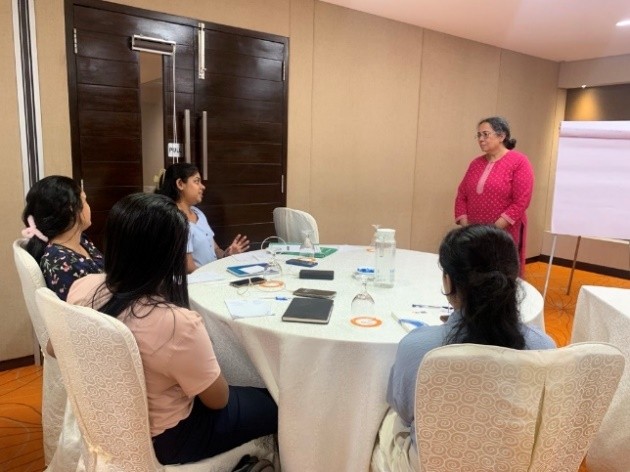
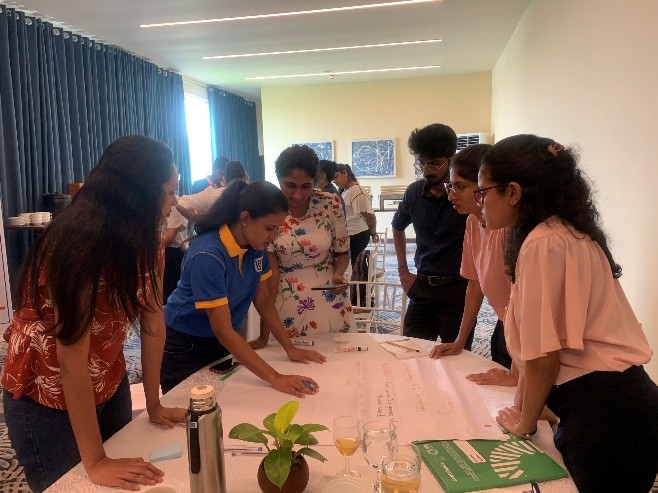
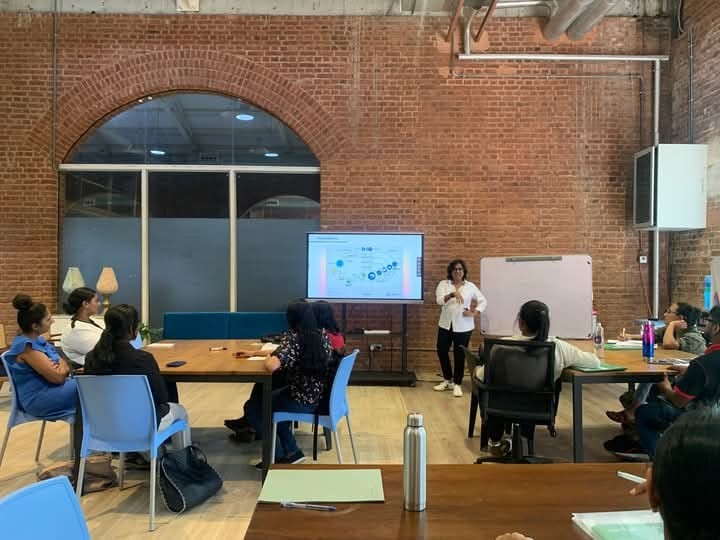
From dozens of inspiring ideas, 8 groundbreaking businesses were selected for a 4-month hybrid incubation programme designed in partnership with top ecosystem players like RTI International, AOD Design Academy, NIA, LIIN, GLX, Yarl IT, and more to foster the connection and the expertise sharing. The programme empowers these businesses through capacity-building and tailored training to match their specific needs.
Interesting Facts
- 💡 None of these businesses are directly in the plastics value chain—but they are tackling the challenges creatively!
- 💪 6 of them are women-led companies.
- 🧪 2 projects in alternative packaging are in the prototype stage.
- 👗 3 projects are shaping a sustainable future in the fashion industry.
- 🏗 1 project is rethinking materials in the building industry.
- 🛋 1 project is innovating in the furniture and supply industry.
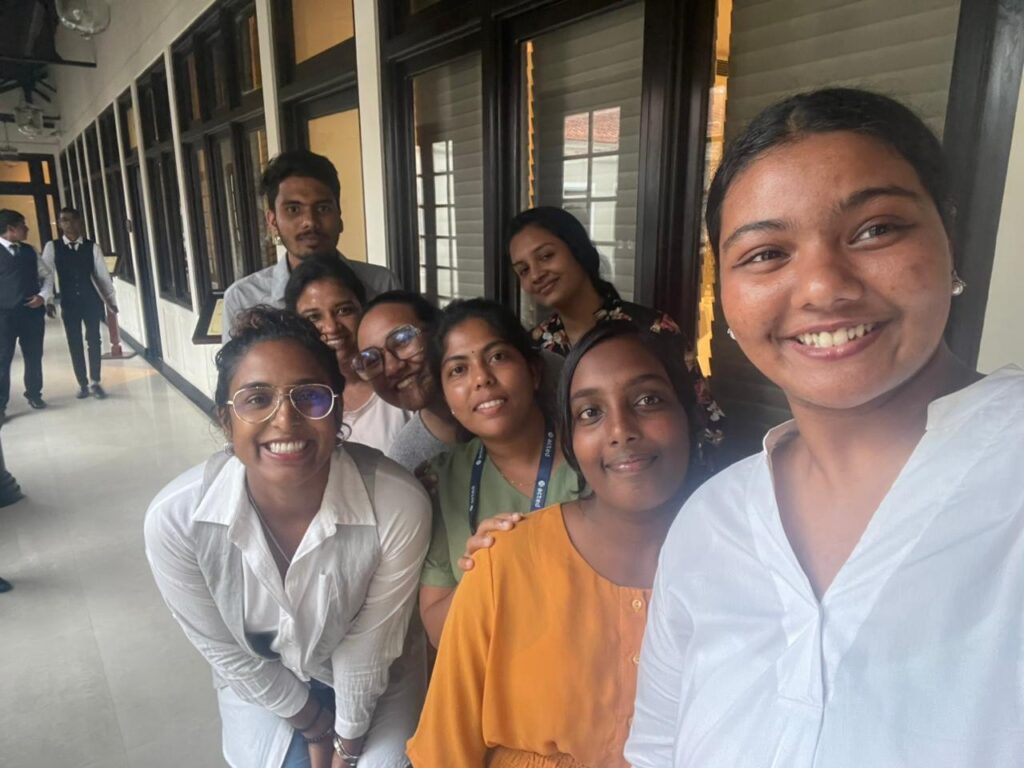
Meet the Cohort
This initiative proves that young entrepreneurs have the power to reshape industries and create sustainable change.
- ALKE is set on a mission to reduce waste one item at a time with beautifully crafted pieces of art jewellery. The studio processes household waste such as single-use PET bottles, polythene bags, and soda cans, collected directly from our communities intercepted before they are sentenced to landfills.
- Ample is a sustainable fashion brand catering to women’s clothing, In the age range of 18-55. Exclusively unique designs in the categories of formal, casual and party wear for a very affordable price range and quality materials, which is trending in the modern world of fashion. Specifically capturing the plus size requirements as well.
- Solocycle is committed to reducing plastic waste from shoe soles by recycling them into high-quality, affordable slippers, thereby tackling the plastic pollution generated by fast fashion.
- Invent of Minds is a company that has developed a business focused on providing office supplies made from bamboo as an alternative to single-use plastic items.
- Star Mushrooms is a pioneering women-led family business dedicated to the cultivation, sourcing, and distribution of mushrooms. Currently, they are advancing research on mycelium packaging— made of the root structure of mushrooms and sandusts.
- Teshvo is currently developing a biodegradable thin film made of seaweed and plant starch to replace single-use plastic thin film.
- Shells Ceylon is an eco-friendly cutlery & waffle cones production company that aims at reducing single-used and plastic cutlery, cups and bowls by using edible products.
- AGC Innovate is a company that produces “Plastic Modified Asphalt Concrete (PMAC),” which converts non-recyclable waste plastic (such as shopping bags, biscuit wrappers, and chocolate wrappers that are often neglected by public and private sectors) into an industrial raw material for use in asphalt paving for roads, highways, car parks, and yards.
Stay tuned for more updates as we take steps toward a plastic-free, sustainable future!


Shaping a Greener Future: The PLASTICS Project in Sri Lanka

PLASTICS: Promoting Long-term Approaches for a Sustainable, Transformative and Inclusive Circular Economy in Sri Lanka

Over 500,000 tonnes of plastic is imported to Sri Lanka annually, and it is estimated that 1.59 million tonnes of plastic waste overall is mismanaged. The linear take-make-dispose model of the plastic value and supply chain (V/SC) in Sri Lanka fails to capture the economic benefits of a more circular approach.
Over 48 months, the PLASTICS project funded by the European Unions, aims to improve economic development within the plastic V/SC through Small, Medium Enterprises’ (SMEs) resource efficiency, circular innovation, green finance, and sustainable waste management (SWM) frameworks in Western Province.
150 SMEs, 10 entrepreneurs, 50 Business Development Service providers, 10 financial and government institutions, and private sector actors will be supported to promote a cohesive environment for green business development. Businesses, particularly women-led ones, will be supported to boost value addition, improving overall competitiveness and cost-efficiency.
Objective
The objective of the project is to facilitate sustainable and innovative plastic minimisation and management in Sri Lanka by integrating SMEs in greener value and supply chains, thereby contributing to economic prosperity and environmental sustainability.
Planned Outputs
- SMEs in the plastic V/SC adopt circular economy strategies.
- Innovative, circular economy approaches are streamlined throughout the plastic V/SC.
- Access to finance and green investments are increased to scale up green economic initiatives, especially among SMEs.
- The traceability, transparency and compliance to plastic sustainable waste management are strengthened through public private dialogue, collaboration and monitoring.



Boosting SME Growth with Business Plan Training

The Industrial Services Bureau (ISB) has successfully concluded seven comprehensive 5-day Business Plan Preparation Training programs for small and medium enterprises (SMEs) engaged in the plastic recycling value chain in Western Province of Sri Lanka. These programs, conducted under the EU-funded PLASTICS project, have led to the completion of 113 individual business plans by the end of November 2024, with an additional eight plans currently in progress. Another training session is planned for 15-20 SMEs later in December 2024.
The main goal of this initiative is to help project beneficiaries create strong 5-year business plans. These plans will focus on key areas like using resources efficiently, adopting cleaner production methods, promoting sustainable consumption, encouraging green investments, and ensuring social inclusion and gender equality. By taking this well-rounded approach, the initiative aims to support the circular economy by improving how plastics are collected, recycled, manufactured, and marketed.


Core Components of the Training
Participants learned to develop the following critical elements of a business plan:
- Vision, mission, and objectives.
- Marketing, production, and human resource plans.
- Financial planning, including ratio analysis.
This initiative not only supports business growth but also provides foundational documents for other project activities, such as accessing green finance, RECP (Resource Efficiency and Cleaner Production) assessments, QEMS (Quick Environmental Management System) certification, ISO 14001 compliance, and participation in buyer-seller forums.
Impact of the Training
The training had a significant impact on SMEs by providing them with practical knowledge to make structural improvements in their businesses. Participants also gained a clear understanding of profit and loss analysis, which has helped them make more informed decisions. As a result of the training, many SMEs have successfully secured bank loans and in-kind grant assistance using the business plans they developed.
The training sessions were held in Gampaha, Colombo, and Kalutara districts to make them easily accessible to participants. Expert trainers and business development specialists from ISB led the sessions, with ACTED staff managing the organisation and logistics.
This initiative marks a significant turning point for many SMEs, steering them toward sustainable, profitable operations aligned with circular economic principles.




